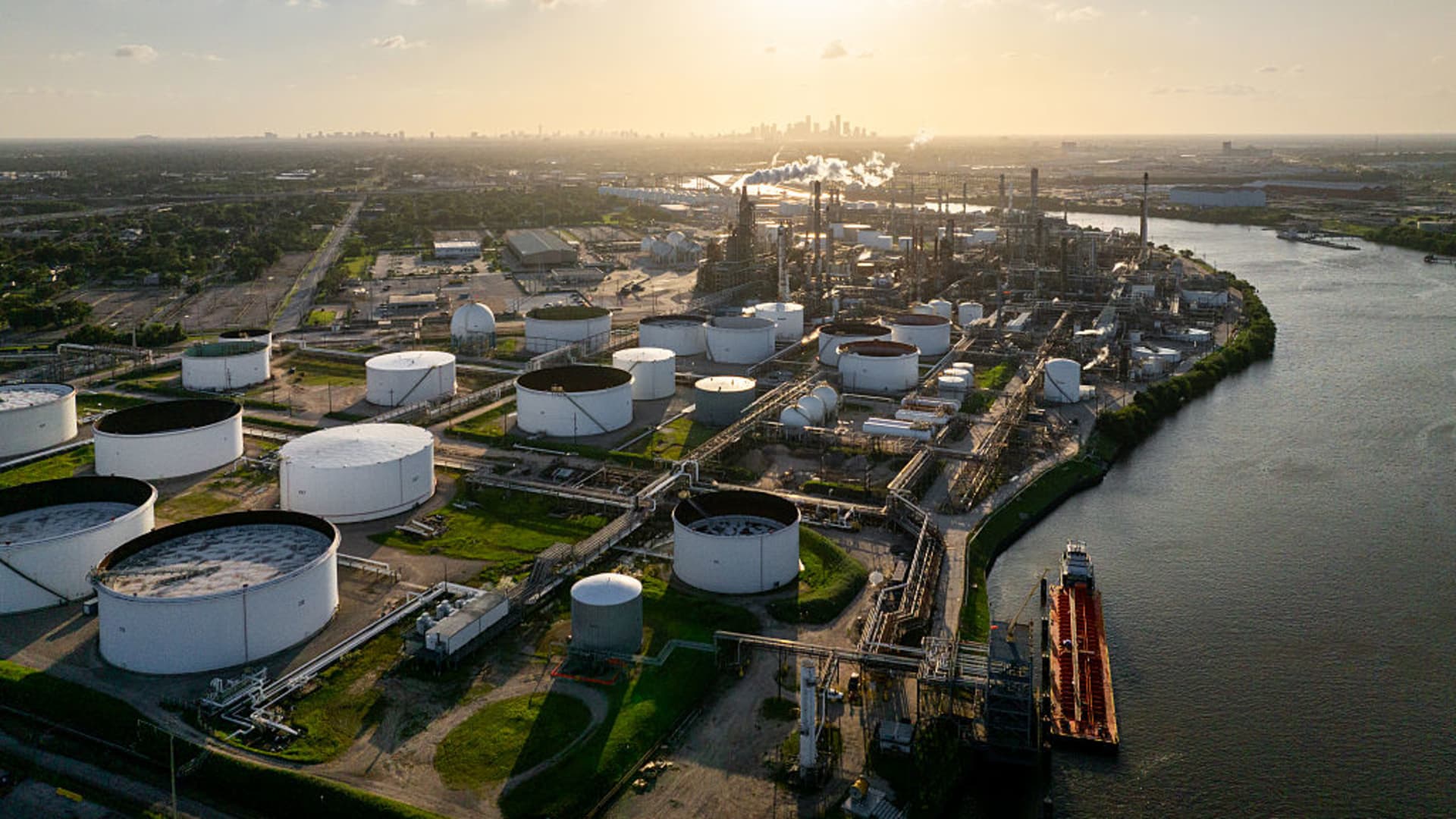Crowded Dotonbori bridge over water canal with illuminated indicators and billboards , lengthy publicity, movement blurred crowd at Night time. Unrecognizable Crowd. Dotonbori, Osaka, Japan, Asia.
Mlenny | E+ | Getty Photos
Asia-Pacific markets prolonged their sell-off Monday as fears over a world commerce conflict sparked by U.S. President Donald Trump’s tariffs fueled a risk-off temper.
Hong Kong markets led losses within the area, with the Cling Seng Index declining 8.95%. In the meantime, mainland China’s CSI 300 fell 5.41%.
Over in Japan, the benchmark Nikkei 225 misplaced 5.92% to hit an 18-month low whereas the broader Topix index plummeted 5.94%. Earlier within the day, buying and selling in Japanese futures was suspended due the market hitting circuit breakers.
In South Korea, the Kospi index pared some losses and was final down 4.11%, whereas the small-cap Kosdaq declined 3.41%.
Australia’s S&P/ASX 200 additionally pared some losses to three.78%. The benchmark slid into correction territory with an 11% decline since its final excessive in February, in its earlier session.
U.S. futures dropped as buyers’ hopes of the Trump administration having profitable negotiations with international locations to decrease the charges had been dashed.
In the meantime, U.S. oil costs dropped under $60 a barrel on Sunday stateside. Futures tied to U.S. West Texas intermediate crude fell greater than 3% to $59.74, their lowest since April 2021.
Trump’s high financial officers dismissed any fears of inflation and recession, declaring that tariffs would persist no matter markets could do.
Shares within the U.S. bought off sharply final Friday, after China retaliated with recent tariffs on U.S. items, sparking fears of a world commerce conflict that might result in a recession on the earth’s largest economic system.
The Dow Jones Industrial Common dropped 2,231.07 factors, or 5.5%, to 38,314.86 on Friday, the most important decline since June 2020 throughout the Covid-19 pandemic.
The S&P 500 nosedived 5.97% to five,074.08, its largest decline since March 2020.
In the meantime, the Nasdaq Composite, which captures many tech firms that promote to China and manufacture there as properly, dropped 5.8%, to fifteen,587.79. This takes the index down by 22% from its December document, representing a bear market in Wall Road terminology.
— CNBC’s Brian Evans, Alex Harring and John Melloy contributed to this report.



